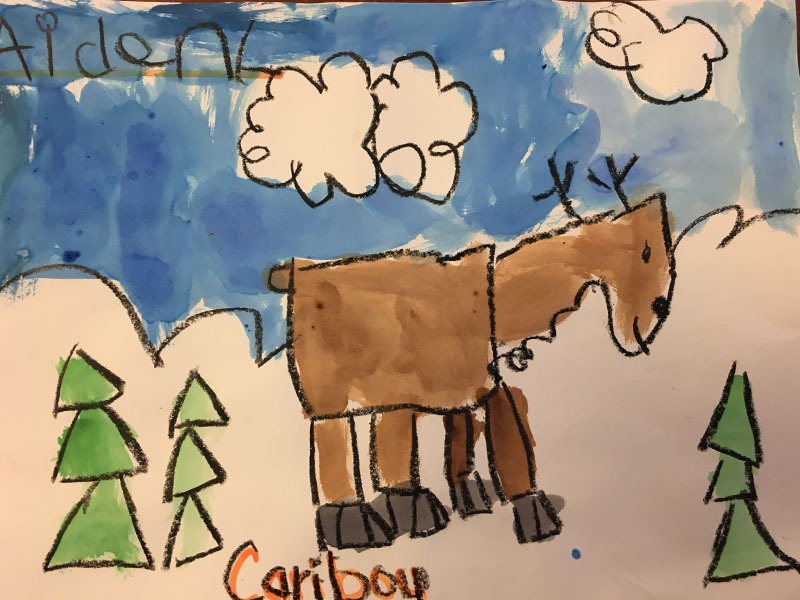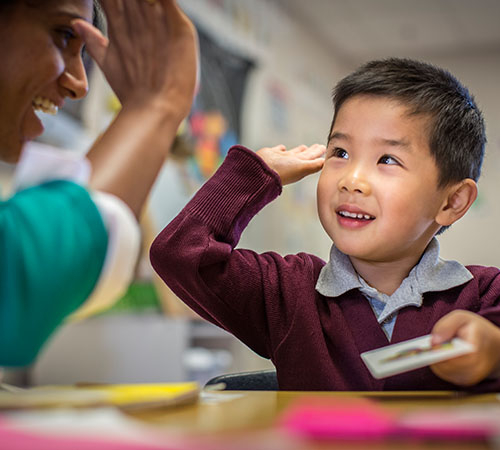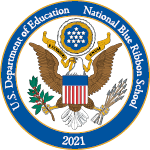Explore Our Preschool Curriculum
Select subject to find out more
Phonics
Children are often intensely interested in reading at an early age. Since reading is essential for future success in all other subjects, Challenger uses phonics to teach students to read. Rather than memorizing every word (using the whole word method, taught at many preschools), Challenger students, using phonics, learn how letter sounds blend together to form words. The first three letters a preschooler learns are S, M, and A. When a young preschooler first sounds out the word SAM after learning just these three, you should see how thrilled he is! We then use every new letter to teach him to read new words everywhere he goes. Our preschoolers use phonics concepts to sound out words without guessing. As a result, Challenger students are confident in their reading abilities and are ready to tackle new subjects. Our three-year-old preschoolers read simple sentences, and our four-year-olds read little books.
Math
Challenger uses delightful songs and activities to help students remember numbers and geometric shapes. Students learn to count forward and backward and recognize place value. We teach them to understand the concept of quantity—that numbers represent how many or how much of something—by relating it to items they see or touch. They practice arithmetic using addition and subtraction story problems about familiar things.
Science, Logic, and Historical/ Cultural Insights
Exploring exciting things like dinosaurs, insects, weather, plants, and human senses helps fuel students’ natural desire to understand their world. Presentations and experiments in these areas also help students improve their ability to focus, concentrate, and stay on task. Students are encouraged to ask questions and use reason to understand concepts and make conclusions. Throughout the year, they also learn about explorers, holidays, customs, and presidents.
Music
Challenger strives to teach students to be confident, musically educated performers and listeners. Preschoolers learn to sing with proper vocal technique, play simple percussion instruments, and dance with partners. They learn to feel the tempo of different rhythms as well as the beat, and they are encouraged to freely express themselves and use their imaginations with the music. Twice a year—at Christmas and in the spring—classes put on performances showcasing their musical and intellectual prowess.
Art
Challenger preschoolers become able to look at animals, people, and buildings to see the basic shapes that visually compose them. Students learn fundamental skills needed in art expression—cutting, gluing, painting, drawing, and sculpting.
Large/Small Motor Skills
Our preschool curriculum includes activities such as working with manipulatives, performing imaginative finger plays, zipping and buttoning garments, and cutting with scissors. These activities are specifically designed to help students strengthen small muscles and improve dexterity. To help develop hand-eye coordination, our students toss and catch beanbags. We also teach proper pencil grip. Students learn to form numbers and letters and write their own names.
We also encourage the development of large motor skills by engaging students in activities that promote balance, spatial awareness, rhythm, coordination, aerobic fitness, hand-eye coordination, and muscle tone. Our curriculum incorporates dance and drama in addition to traditional PE skills like using a balance beam and tossing and catching balls.


